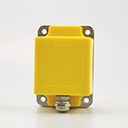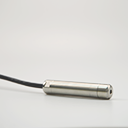Monitoring to prevent sudden structural failure

Inclination sensor

Water table level sensor
One of our past projects was to monitor a masonry retaining wall susceptible to movement that was situated at the boundary of an industrial estate in Shenzhen, China. Observable cracks were found on the retaining wall and typical cracks caused by differential settlement could also be observed on a building near the wall, which meant that the retaining wall was in a state where its stability was very sensitive to the pore pressure of the soil. Further movement of the retaining wall, if left undetected, would lead to a sudden collapse of the wall, which could result in heavy injuries and casualties.
Our inclination and water depth sensors were thus deployed during the rainy season to conduct continuous real-time monitoring for the inclination of the retaining wall and the underground water table levels in its vicinity.
Data measured by the sensors revealed that underground water table levels rose and fell synchronously with recorded rainfall intensity in the district. Subsequently, this resulted in slight increases in the retaining wall’s inclination angle. However, the inclination was observed to return to pre-rainfall values afterwards and maintained a horizontal general trend throughout the monitoring period, which implied that the retaining wall could still be considered to be safe.
This case demonstrates the benefits that Pyxis brings to all the various parties involved - nearby residents at the monitoring site, the estate management, and also professionals (engineers, consultants, technicians, and contractors). Firstly, no manpower was required to take measurements throughout the monitoring period, which alleviated maintenance costs for the estate. Secondly, latest measurements were available 24/7 through Polaris, even during holidays and heavy rains. Most importantly, however, measurements were available at much more granularity than what could be feasibly achieved with conventional measurement approaches. Conclusions on the retaining wall’s conditions were based on a much more complete picture of its behaviors. Therefore, the public could be provided with a more reliable and trustworthy information that pertained to their safety.
Interested in our IoT devices and monitoring platform? Fill in the contact form and our IoT expert will reach out to you shortly. Alternatively you can email us directly at contact@lrctl.com.
Contact us